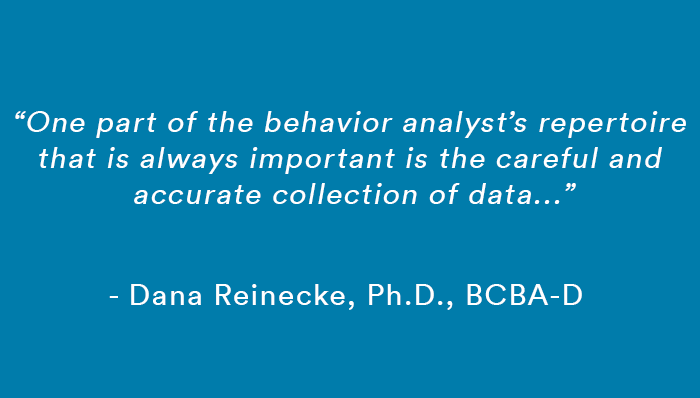When it comes to the treatment or reduction of challenging, disruptive, dangerous problem behaviors, regardless of the setting or populations served, this will often be referred to as “Crisis Intervention”.
This concept is far broader than ABA, as many institutions and facilities will create, monitor, and implement crisis interventions whether anyone on site has received ABA training, credentialing, or licensure, or not (examples: police, schools, daycares, residential settings, prisons, etc.).
Being such a broad topic, that can look about 10,000 different ways depending on the setting and availability of highly trained specialists, it should come as no surprise that crisis behavior scenarios frequently result in injury or even death. If you do some online searches for news stories related to seclusion and restraint, regardless of the setting, you will see what I mean.
This issue is also larger than disability.
Yes, most of the horror stories we see on the news where someone was seriously injured during a restraint DO involve people with disabilities (whether it was known at the time, or not). But in the absence of disability or mental health issues, crisis management can still lead to serious injury or death. That could be for the person(s) responding to the crisis, or to the person(s) having the crisis.
This is a very weighty and complex topic, and I can’t possibly cover everything anyone should know about crisis intervention. However, due to the seriousness of crisis scenarios and the increased risk of harm (again, for the person intervening, the person or having a crisis, or even both of those people), I very much want to share some resources and information about managing behavioral crises.
First, some terms. Here is my favorite definition of a crisis:
A time of intense difficulty, trouble, or danger; a time when a difficult or important decision must be made.
During a behavioral crisis, the individual is having intense difficulty or trouble. They are having a hard time (not giving you a hard time). Decisions must be made, not just regarding what to do RIGHT NOW, but in the future, in case this happens again. Which, without the proper supports in place, the crisis event is highly likely to happen again.
Viewing a crisis through this lens takes the responsibility off of the individual having the crisis, and onto the supports in place (or lack thereof). When a crisis event occurs, ask yourself these questions:
1. Does this individual know how to safely de-escalate during a crisis event?
2. If yes, then why are they not using that tool?
Truly individualized and effective de-escalation tools are best understood as the means by which an individual in a crisis state can identify they are approaching a crisis state, select a de-escalation method, implement the method, and lastly evaluate how well the method worked once they are calm again.
Depending on the setting, availability of support help, and the understanding of de-escalation (or lack thereof), this “returning to neutral” process can take minutes, hours, days, or may not occur at all. It may involve a team of people, a caregiver or support person, or happen independently. When it doesn’t occur at all, that typically results in emergency room visits or admittance into an inpatient facility.
I do not know your work setting, the populations you serve, or your job title, but if you are reading this post I have to assume you have either experienced a crisis event with a client/student/etc. or want to be equipped if it should happen.
Right here I have to point out a very common myth, that can be quite dangerous when people believe it: In the field of ABA, clients who exhibit (or have a history of exhibiting) highly violent or dangerous problem behaviors may be classified as exhibiting “severe behavior”. It is a myth that only severe behavior clients can have crisis events. That is not true at all. Clients with non-violent or less disruptive problem behaviors, under the right set of combined circumstances, could have a behavioral crisis. For example, what if their home routine is significantly disrupted, they are ill, dealing with a change of medication, and also recently started puberty? These setting events when combined, could trigger a crisis event. For this reason, it is important for professionals and practitioners to be properly trained and equipped for crisis conditions, far before they are needed.
Now I want to speak specifically to ABA implementers (RBT’s, paraprofessionals, etc.) who work directly with clients: If you are working with clients where you are regularly responding to crisis events or working with clients with a known history of crisis events, you should be following the policies of the physical management training you received. If you have not received any physical management training, then you should not be working with those clients. It is dangerous for you, and dangerous for them.
Again, crisis events could potentially happen at any time, with any client/student/etc. It would be unwise to think “Oh I don’t work with severe behavior individuals, so this doesn’t apply to me”. For ANY of us (disabled or not, mental health issues or not) the right set of circumstances could trigger a crisis event.
If you were in the midst of a crisis event, who would you want helping you? Someone reacting on impulse or instinct, or someone who has been thoroughly and properly trained on safe de-escalation?
So what can be done? Glad you asked.
There are many, many crisis intervention and de-escalation resources readily available. If you are not in the position to set policy or choose employee trainings, you can still request additional training from your employer and send them recommendations of evidence-based methodologies. You can also always communicate when you feel ill-equipped or prepared to work with a specific student/client/etc. or feel unsafe.
Research shows that in the absence of individualized, evidence- based crisis interventions, individuals will contact injury to self and others (Burke, Hagan-Burke, & Sugai, 2003), receipt of medications with serious side-effects that rarely correct the causes of the behaviors (Frazier et al, 2011), receipt of intrusive, ineffective interventions that are punishment-led (Brown et al, 2008), and increased negative interactions (Lawson & O’Brien, 1994).
In ‘Effects of Function-Based Crisis Intervention on theSevere Challenging Behavior of Students with Autism ‘, the following procedures are recommended for crisis intervention planning-
Be cognizant of crisis needs and function when designing a behavior plan for students with crisis behaviors, and operationally describe steps to be taken for each phase of escalation. When describing these steps, be aware of the behavioral function. Change the quality of reinforcement delivered between appropriate and inappropriate behavior, and prompt appropriate behavior before providing access to calming activities. Train staff to competence on the intervention strategies (which most often includes role play scenarios during training, not just discussion/lecture).
*Recommended Resources (please share!):
~Find the number for the mental health crisis/emergency support services in your state, and save it in your cell phone
~For caregivers, if your child is on medication the Physician/Psychiatrist will likely have an after-hours or emergency help desk. Save that number in your cell phone
https://www.pcmasolutions.com/
https://www.marcus.org/autism-training/crisis-prevention-program
Crisis Intervention Strategies
Prevention of Crisis Behavior
Crisis Help in Georgia
ASD & Crisis Behaviors
Handbook of Crisis Intervention and Developmental Disabilities
ASD & De-Escalation
Crisis Prevention Institute
ASD & Stages of Behavioral Escalation
Nationally Certified Crisis Training Providers
About The Author: Tameika Meadows, BCBA
“I’ve been providing ABA therapy services to young children with Autism since early 2003. My career in ABA began when I stumbled upon a flyer on my college campus for what I assumed was a babysitting job. The job turned out to be an entry level ABA therapy position working with an adorable little boy with Autism. This would prove to be the unplanned beginning of a passionate career for me.
From those early days in the field, I am now an author, blogger, Consultant/Supervisor, and I regularly lead intensive training sessions for ABA staff and parents. If you are interested in my consultation services, or just have questions about the blog: contact me here.”
This piece originally appeared at www.iloveaba.com.


